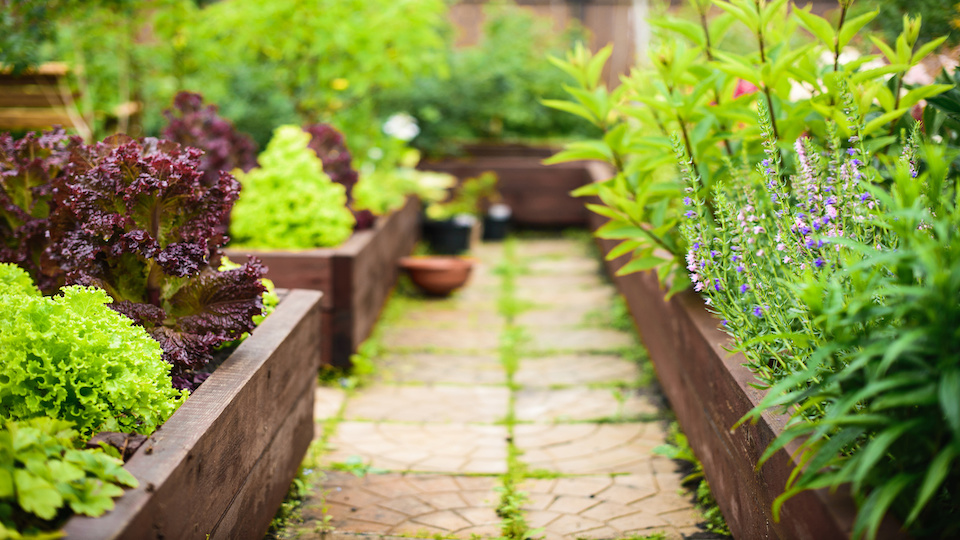A raised bed is a great way to start a vegetable garden. It allows you to create the perfect environment for your veggies, with just the right soil mix and good drainage. You can generally grow any vegetables in this way, but some are superstar producers in a raised bed.
What is a Raised Bed?
It’s essentially what it sounds like: instead of digging plants right into the ground of the garden, they go into soil that is raised up above ground level. There are some important benefits of growing vegetables this way:
- The soil in the raised bed warms sooner in the spring and stays warmer in the fall.
- You can manipulate the soil in a raised bed to find the right mix for what you’re growing—especially useful if your garden soil isn’t of the highest quality.
- It’s easier to access plants when they are raised up.
- Raised beds are typically easier to keep weed- and pest-free.
- With fencing as well you can keep out bigger critters, like rabbits.
Making a Raised Bed
This is a pretty simple garden chore. You just need four two-by-twelve plywood planks, some scrap lumber, bricks, or even concrete blocks. Create a square or rectangle of a reasonable size for your gardening needs in a sunny spot. Fill the bed with topsoil and mix it a little way into the existing soil so there is no drainage barrier. Also, mix in compost to provide nutrients for the vegetables.
What to Grow in a Raised Bed
You can truly grow anything in the raised bed you create, but some vegetables are better suited to it than others or can benefit in important ways that will improve quality and yield.
- Greens and lettuce. Lettuce and greens like chard and kale are crops that grow best in the cooler weather of spring and fall. The soil in a raised bed will stay warmer in the fall and warm up sooner in the spring so you can plant greens and lettuces early and late for extra harvests.
- Onions. Raised beds have excellent drainage, which onions require. Onions are also nutrient-hungry, and a raised bed gives you the opportunity to manipulate the soil and add a lot of compost and other organic materials. Raised beds provide a longer growing season, thanks to the warmer soil, and onions have one of the longest growing seasons of all vegetables.
- Potatoes. To grow potatoes you need to mound the soil, which is easier to do in a raised bed. You won’t have to bend down so far and the looser soil will make mounding simpler. Potatoes also require good drainage to prevent rotting tubers.
- Radishes. These small root vegetables grow and mature faster than most other vegetables. In a raised bed, tuck them in between bigger plants that grow more slowly. The radishes will be able to grow to harvest time before the other plants overshadow them.
- Peas and beans. These climbing vegetables are good for raised beds because they grow vertically and won’t take up much space. Put a trellis on the outside or the inner edge of the bed to support the vines as they grow.
- Tomatoes. You’ll need to sink some tomato cages into the soil to support the plants or let them grow against a trellis or any fencing around the edges of the bed. Tomatoes are great in raised beds because they are heavy feeders. When you mix up the soil for your bed, use lots of compost to get a big harvest of tomatoes.
- Carrots. Root vegetables generally do well in raised beds, but carrots, in particular, thrive in the loose soil that lets them get air and room to grow. You can even start seeds outside in a raised bed a little early, a couple weeks before the last frost.
Vegetables to avoid in raised beds include corn, which needs more root stability to anchor it. Watermelon, winter squashes, and pumpkins are also less well-suited to raised beds. They need a lot of space to grow along the ground and can be cramped in beds and run over other veggies.
A raised vegetable bed is easy to make, simple to maintain and will improve your veggie harvest in the first year.
-Mary Ellen Ellis



